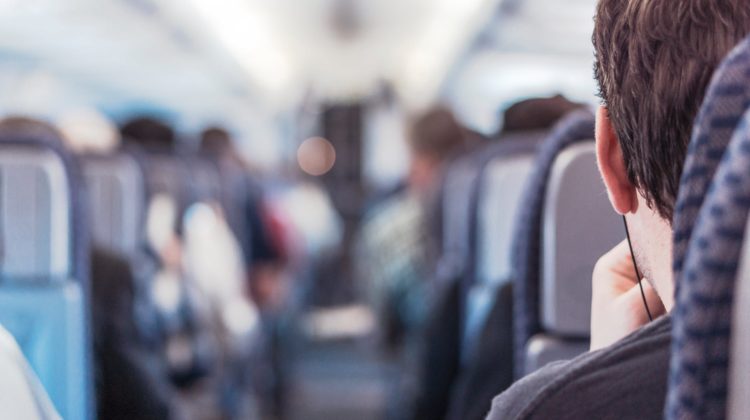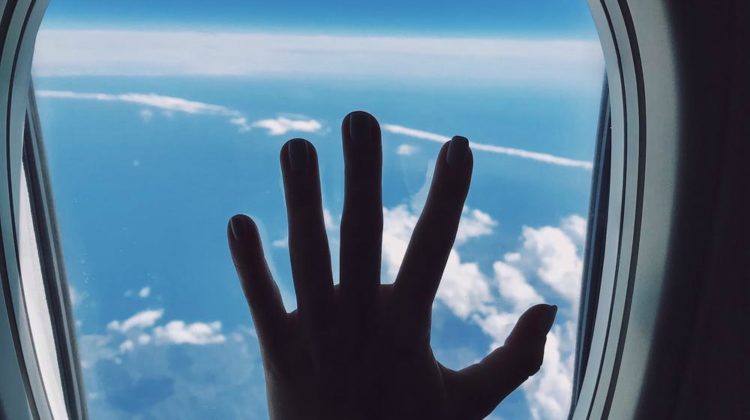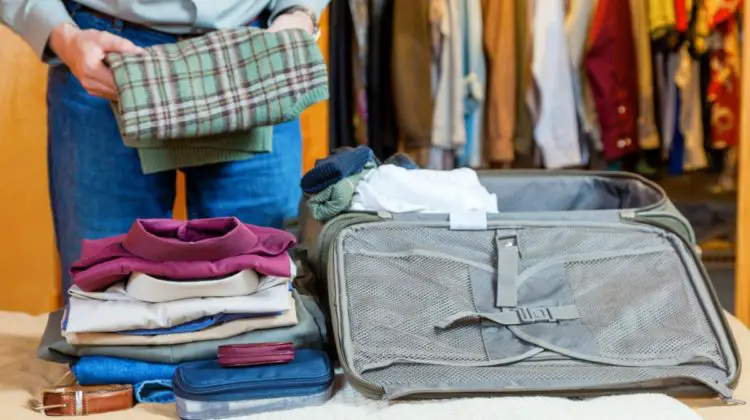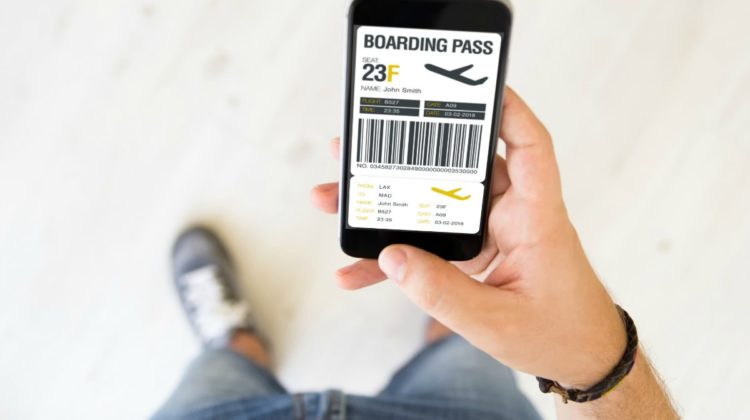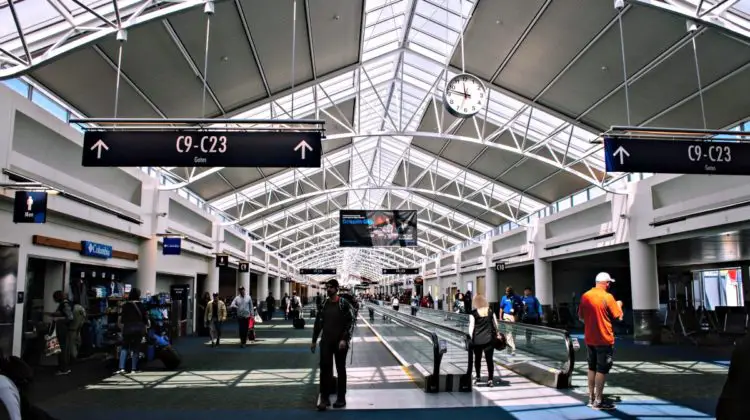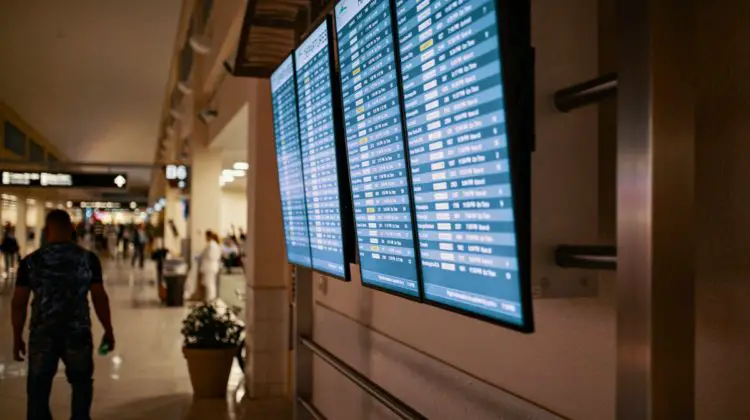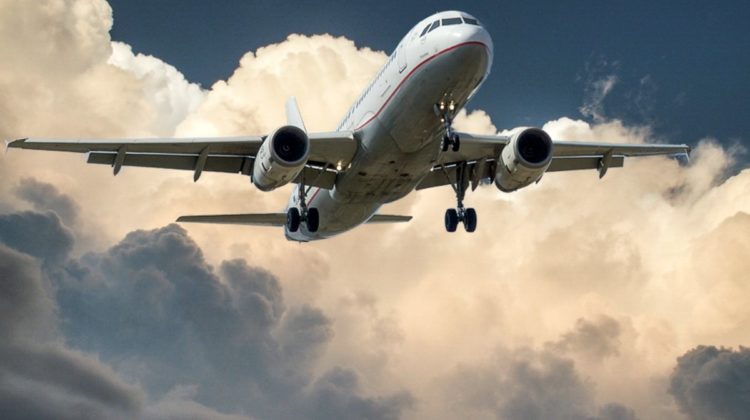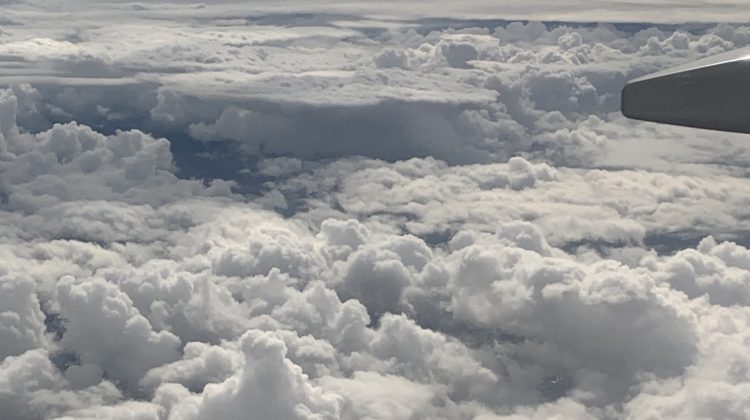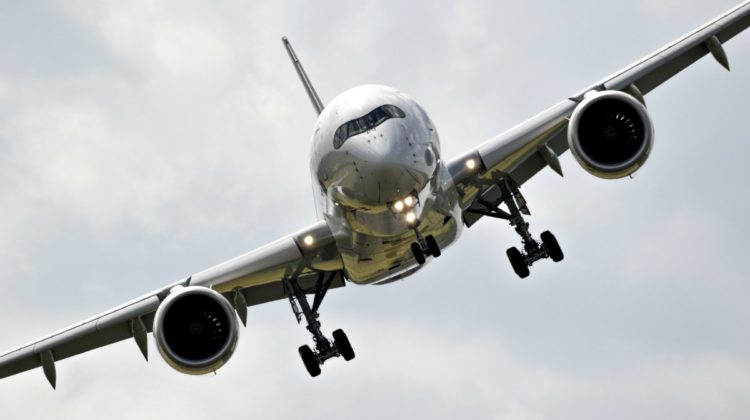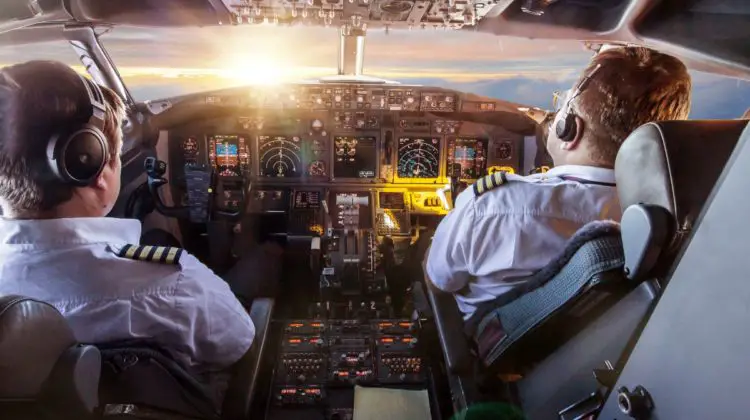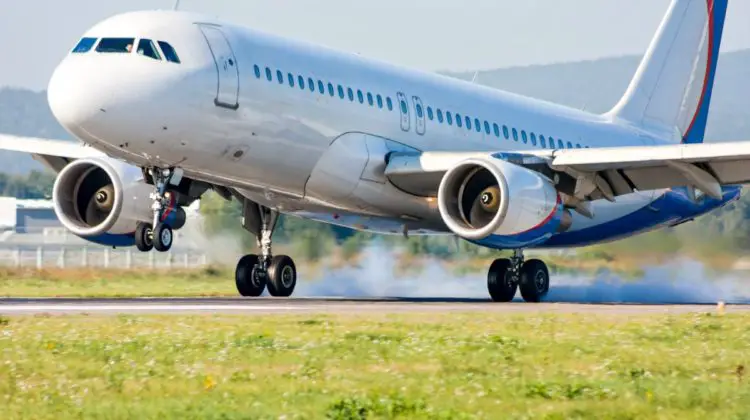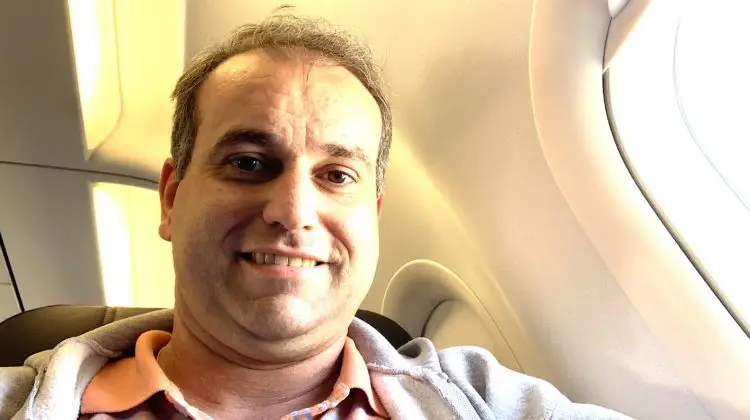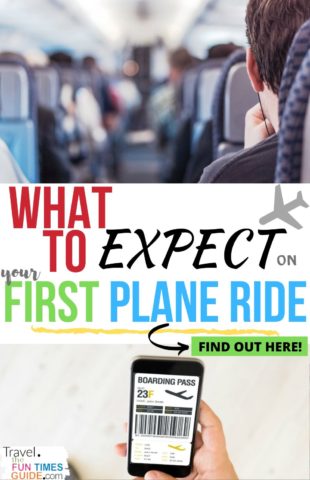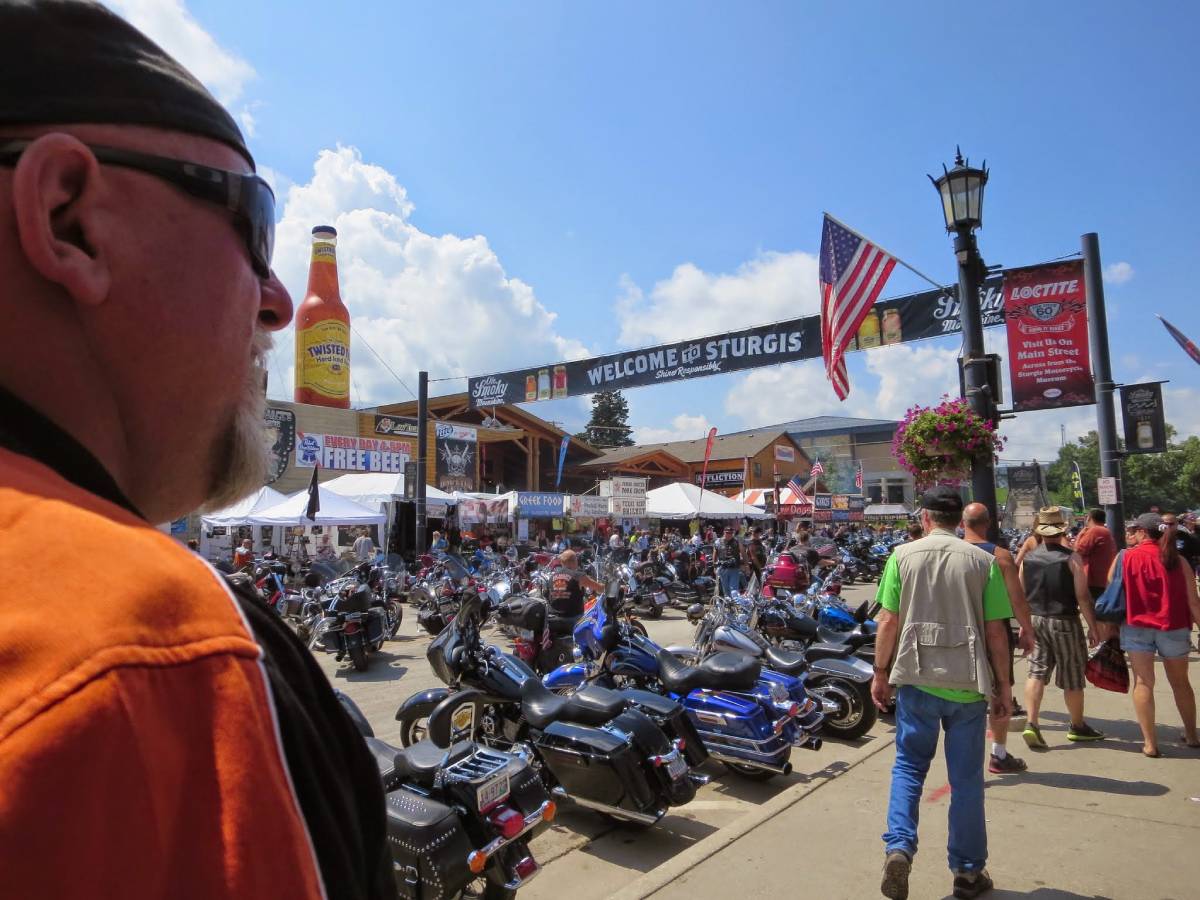I finally went on my first plane ride! It only took me 38 years to go on my first airplane ride — because I’ve had a fear of flying ever since I was a kid.
Since I had never flown before, I wasn’t 100% certain on what to expect.
So, in an attempt to help others who are preparing to fly for the first time… I’m going to try to give you a better idea of what to expect on your first plane ride.
What was the straw that finally broke this frequent road-tripper‘s back?
I needed to get to California in a hurry for a business trip. I live in Florida and had just 5 free days to get to the West Coast, do what I needed to do for work, and return home.
Ordinarily, I would’ve made this a fun road trip. In fact, one of my life goals is to take a cross-country road trip from Florida to California. But this wasn’t the time — I just didn’t have enough free days to drive from coast to coast.
So, I ended up hopping aboard a plane for the first time in my life to get to California.
And I have some great tips on how to survive your first plane ride!
How To Prepare For Your First Plane Ride
Like everything else that I’ve been fearful of in my life (like crossing bridges and riding roller coasters), before my first airplane ride I did some research to find the answers to questions like these:
- What identification should I bring with me to fly?
- When should I arrive at the airport?
- Where do I check in?
- What should I do to pass airport security?
- How do I prepare for takeoff and landing?
- What’s it like to fly?
- How do I pack for a plane trip?
How To Pack For A Plane Trip
This was the hardest part for me. When I drive my car on long road trips, I’m limited only by what can fit in the trunk of my car. And in the backseat. And maybe on the roof.
But when you’re traveling by plane, there’s a lot less space to pack what you want to take along — or carry home. (I love buying souvenirs from my travels!)
I also had connecting flights in Phoenix each way between Florida and California. Since I didn’t want to risk losing any luggage on my journey, I decided to restrict what I took to only the items I could fit in my carry-on luggage. For my trip on American Airlines, this meant a small piece of luggage and a personal item, such as a laptop bag or backpack.
Traveling Light With Carry-On Luggage Only
Now, some dudes can get by on 1 pair of pants, 2 shirts, and 3 pair of underwear and socks for a 5-day trip. Not me!… I usually multiply the days of my trips by 1.5 and use that figure to determine how many changes of clothes to bring — double my days for socks and underwear.
Of course, fitting 7 or 8 days of clothes into a single carry-on bag — along with a suit jacket for work — was going to be tough.
I decided to take 3 changes of clothes for work and 2 leisure outfits — which I planned to wash at the laundromat during the middle of my stay at the hotel in California. This helped me cut down the number of clothing items that I needed to take along for this trip.
Must-Have Items For Your First Plane Trip
When packing for my first airplane ride, these are a few of the things I did that I highly recommend:
- Double-check with the airline regarding requirements for carry-on luggage
- Buy travel-size toiletries that pack small and comply with liquid regulations
- Take an electric razor since it’s permissible and avoids any issues with carrying straight razors
- Use your laptop bag to carry more than just your computer
- Try some of these packing hacks to maximize your luggage space
But there’s more to do more than just pack clothes for your first plane ride.
You’ll also need a boarding pass and proper identification!
Rules on what’s considered acceptable ID sometimes change from year to year and country to country:
- For domestic United States flights, bring at least an approved driver’s license
- For any and all international flights, take along your driver’s license and valid passport
Be sure your identification is valid, up to date, and has no restrictions against it. And if you’re traveling with any minors be sure they, too, have all necessary identification.
TIP: You’ll need to have your ID handy at the airport — for quicker boarding and fewer hiccups while going through security. So be sure to keep it in a safe but convenient location!
Here are 2 helpful resources regarding how to pack for a plane trip:
How To Find Your Way Around The Airport
OK, so you’re all packed and ready to fly. There’s just one more necessity — you’ve got to get to the airport.
Your options are:
- Have a friend or family member drive you there
- Hail a taxi cab
- Use a rideshare program like Uber or Lyft
- Drive yourself and park your car in long-term parking
For my first airplane ride, a dear friend dropped me off at the airport and my sister picked me up when I returned.
Also, be sure to give yourself plenty of time to get to the airport!
Unlike the oft-hilarious scenes in plenty of movies, you can’t simply pull up in time to run to the gate and hop aboard your first plane ride.
Just how early should you arrive for your flight?
- At a minimum you should arrive no less than 60 minutes prior to departure — if you don’t have any checked baggage.
- For domestic flights with checked luggage, show up at least 90 minutes before your flight.
- Flying international? Get to the airport 2 hours or more before your flight leaves.
Depending on the size and layout of the airport from which you’re departing, you may need even more time to get around.
If you need assistance in getting from point to point, don’t hesitate to ask airport associates for help.
TIP: Many of the airports I’ve visited also have cart and transport services to help people who have more difficulty getting around.
Once You Arrive At The Airport…
- If you don’t already have your boarding pass on your smartphone (or printed out), then be sure to take care of that right away by going to a ticket counter or ticket machine as soon as you arrive at the airport.
- Need to check your baggage? You can do so either curbside or inside at the baggage check-in counter.
- Double-check at the baggage counter (or on the large digital flight info display boards) which terminal and gate you need to get to — and follow the overhead signs to begin making your way there.
- At the airport security checkpoint, remove your shoes, metal objects, and other accessories before you reach the metal detector. When passing through security, be sure to comply with security officials and their instructions. They have a pretty low tolerance for arguing or resisting what they ask you to do. Bickering will only make the boarding process for your first plane ride take longer and cause people around you to become aggravated.
- Once you and your items have been cleared through security, gather your belongings, get your shoes back on, put other personal effects where they need to go, and walk to the gate.
- If you need to, use the restroom or grab a bite to eat before boarding the plane. You can take anything you buy in the airport onto the plane with you — including food and drink.
- Check with gate associates if necessary to have last-minute luggage checked if it happens to be too large or the airline anticipates not having enough overhead stowage room for all the bags that will be brought on-board.
- Listen for overhead announcements and instructions prior to boarding the plane. Many airlines call groups of passengers at a time — so it’s not a free-for-all mad-dash to the seats.
- Once your seating group is called… proceed to the bridge, show your boarding pass, find your seat, stow your carry-on bag in a nearby spot in the overhead compartment, settle into your seat, and prepare for takeoff on your first plane ride!
What It’s Like To Fly In An Airplane
OK, so, your carry-on luggage is stored in an overhead bin… You have a personal item like a backpack or purse stowed just under the seat in front of you… You’re seat-belted into your seat… And maybe you’ve already struck up a conversation with your neighbor sitting next to you…What’s next?
It’s time to fly!
The Flight Crew – What They’re Doing
Once boarding has finished and the last passenger is on board, the flight crew will begin locking all cabin doors and ensuring that overhead storage bins are securely closed.
Soon, an announcement will be made that it’s time to put your phone into airplane mode.
Flight attendants will also announce their usual pre-flight safety instructions:
By this time, the plane is either taxiing to the runway, or about to do so.
Taxiing involves lining the airplane up on the tarmac for takeoff.
At busy airports, it may take several minutes for a plane to wait its turn to fly. In some extreme situations, it can take 30 minutes or more to get off the ground once a plane has left the gate.
Finally… It’s YOUR turn for takeoff!
This will surely be one of the most exhilarating parts of your first plane ride. It was for me anyway.
Taking Off – What It’s Like
The engines will fire up really loud — and you may feel vibrations in your seat, on the floor, and throughout the rest of the plane. This is totally normal!
Within seconds, the plane will be rumbling down the runway at speeds of more than 150 miles per hour.
Hope for a smooth runway! As the plane picks up enough speed to take off, you’re going to feel every joint in the concrete (or tarmac) as you high-tail it down the runway.
Gravity will push you back into your seat. The sensation of taking off reminded me a bit of what it feels like when I hit the gas pedal in my car the moment a traffic light turns green.
If you’re looking out the window, you’ll suddenly begin noticing that you’re lifting off the runway — slowly at first, but within minutes you’ll see the runway, airport, and the surrounding terrain disappearing below you with greater pace.
Cruising In The Air – What It’s Like
As soon as you get into the air, you will feel a lifting sensation. And then, within moments… a sinking feeling.
This is totally normal. Your plane is not losing speed and about to fall. Rather, it’s the forces of gravity playing tricks on your body as you lift into flight and the plane begins its ascent into the sky. It’s science at work!
While the plane’s cabin is pressurized (to help reduce major differences in air pressure between the ground level and the higher levels in the atmosphere), rapid elevation changes can still cause your ear canals to feel stuffy.
I was popping my ears for awhile after takeoff and during the approach for landing, too.
Here are a few tips to lessen ear pressure problems:
- Yawn
- Chew gum
- Use ear plugs
- Any combination of these and other methods recommended by a medical professional
As some point, the pilot may need to turn the plane a different direction to begin traveling toward your destination. On your very first flight, the sensation of the plane rolling left or right will probably take you by surprise. Trust me, you’re not going to fall out of the sky — and now that you know to expect it, you might not even think twice when it happens!
Planes can’t turn laterally side to side in the air like a car on the ground or boat in the water might. Therefore, your plane may bank 20 or 30 degrees to make some of its turns — this, too, is normal.
If you’re on a long-haul flight in a major commercial airliner, it might take 20 minutes or more to reach cruising altitude. For most major commercial airliners, that height is generally between 28,000 and 37,000 feet — depending on the weather, the location and velocity of the jet stream, and other factors.
On-Board Entertainment – What’s Available
Many airlines offer in-flight wifi for watching movies or connecting with other onboard entertainment options. It is usually activated (for a small fee) as soon as the plane reaches cruising speed.
You might choose to take advantage of this. Or, do what I did and read a book you’ve been wanting to finish.
Most airlines provide free drinks and light snacks. And if your flight is longer than 2 hours, chances are you will also get a small meal during your plane ride.
I enjoyed a free cup of Coca-Cola, Biscoff cookies and a good book on my first airplane ride.
I quite like taking a break from electronics from time to time — and my first airplane ride was a great opportunity to unplug.
You could also take a nap. Or, browse through the magazine that’s provided in the seat pocket right in front of you. (I just hope you don’t have to use the air-sickness bag that’s in the seat pocket!)
Air Turbulence – What It’s Like
Speaking of air-sickness bags… If this is your first plane ride, then you’ve never experienced in-flight turbulence. Goodness knows I certainly didn’t!
What exactly is air turbulence?
Think of turbulence like hitting potholes and cracks on the road when driving in your car.
When a plane is cruising in the sky from Point A to Point B, it’s driving on a cushion of air. Severe weather, crosswinds, and even topographical differences on the ground far below the plane can create differences in that cushion of air — atmospheric pockets of rough air that are similar to potholes, bumps, and cracks on an interstate highway.
Turbulence is particularly common when flying through tall, puffy clouds known as cumulus clouds — the kind that can cause thunderstorms.
Can turbulence cause a plane to crash?
While turbulence may rock your seat a bit, or even cause the entire hull to feel like its twisting and turning, you’re not going to hurtle toward the ground.
You might notice the wings of the plane bending during turbulence — this, too, is normal. The flex in the wings is specifically designed to help the plane maneuver through turbulence!
Modern airplanes are designed and built to withstand turbulence. And pilots are trained to look for conditions that cause turbulence and to safely maneuver through it whenever it’s unavoidable.
Yes, you can be injured during turbulence. But you can reduce your risk of injury if you follow all of the in-flight instructions from the flight crew. Also, remain buckled-in throughout the entire flight.
TIP: If the plane happens to experience turbulence while you’re walking to or from the restroom, grab on to something solid — like a seat back or overhead compartment. A flight attendant may order you to sit somewhere other than your assigned seat until the plane has cleared the rough patch of air.
The good news is that injuries from in-flight turbulence are extremely rare. Of the nearly 1 billion airline passengers who take to the skies annually, the U.S. Federal Aviation Administration (FAA) reports an average of only 33 turbulence-related injuries a year.
Even better news? While turbulence can make even the most well-seasoned flyer feel nervous, major commercial airline crashes caused by turbulence are extremely rare. According to blogger and airline pilot Patrick Smith, the number of commercial jet airliner crashes due to turbulence can “be counted on one hand.”
Landing – What It’s Like
Hopefully your first flight has been uneventful and virtually free of turbulence.
Before you know it (yes, honestly), you will be nearing your destination and the flight crew will begin on-board preparations to land.
Every flight is different, but pre-landing announcements typically begin about 30 minutes prior to touching ground — perhaps even farther out, depending on landing protocol and conditions at the airport.
By this time, you’ll be asked by the flight crew to return to your seat and buckle up.
Prior to landing the plane, the pilot will need to reduce cruising speed and altitude as the plane gets closer to the ground.
You will physically notice that the plane has begun descending when you feel:
- Light tugs and pulls on your seat
- A sense of dropping and/or deceleration
- Pressure differences in your ears
As the plane gets closer to the airport, you’ll hear the landing gear drop. This may sound like a whirring noise, and (depending on where you’re sitting), you might feel the vibrations underneath your feet.
The pilot will then begin using the flaps on the wing to more rapidly slow the plane down to an appropriate speed for landing. Deceleration for landing is one of the noisiest parts of a flight — prepare for a few bumps and minor jolts during the landing process.
Before long, the runway will be just a few feet away and the pilot will maneuver the plane to get just the right angle. You might feel the plane “hop” in the air a bit before the wheels hit the ground. Don’t panic — all of the noises and sensations you feel during landing are completely normal.
When the plane’s wheels make contact with the runway, you’re going to feel a couple more jolts as the landing gear hits the ground. Again — totally normal stuff.
Final Thoughts
Congratulations — you’ve just completed your first plane ride!
I had so much fun on my first airplane ride.
Hopefully you enjoyed your experience, too — and will soon want to take to the skies for yet another flight.
Related: A Mom’s Tips For Flying Solo With A Toddler
Like this post? Save it to read again later… or share with others on Pinterest!
I’m a Florida native, a roller coaster junkie, and a frequent traveler. (Long road trips are my favorite.) Born and raised in Tampa, I grew up visiting Busch Gardens Tampa Bay. I authored the book Busch Gardens Tampa Bay: Images of Modern America, which details the colorful history of the Busch Gardens theme park. As a local historian, I’ve also written about other popular landmarks and attractions for a variety of publications. Here, on this Travel Guide, I like sharing little-known facts and fun stuff about all the places I’ve been — so you will have a good idea of what those places are like and what you should know before you go. I especially enjoy helping others plan fun trips… on a budget!

